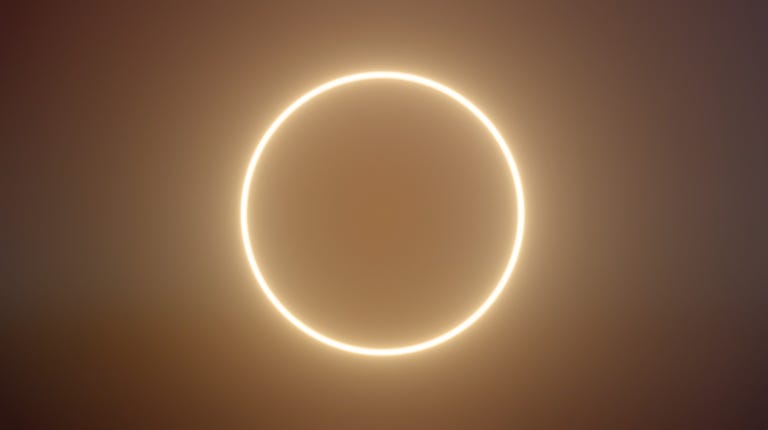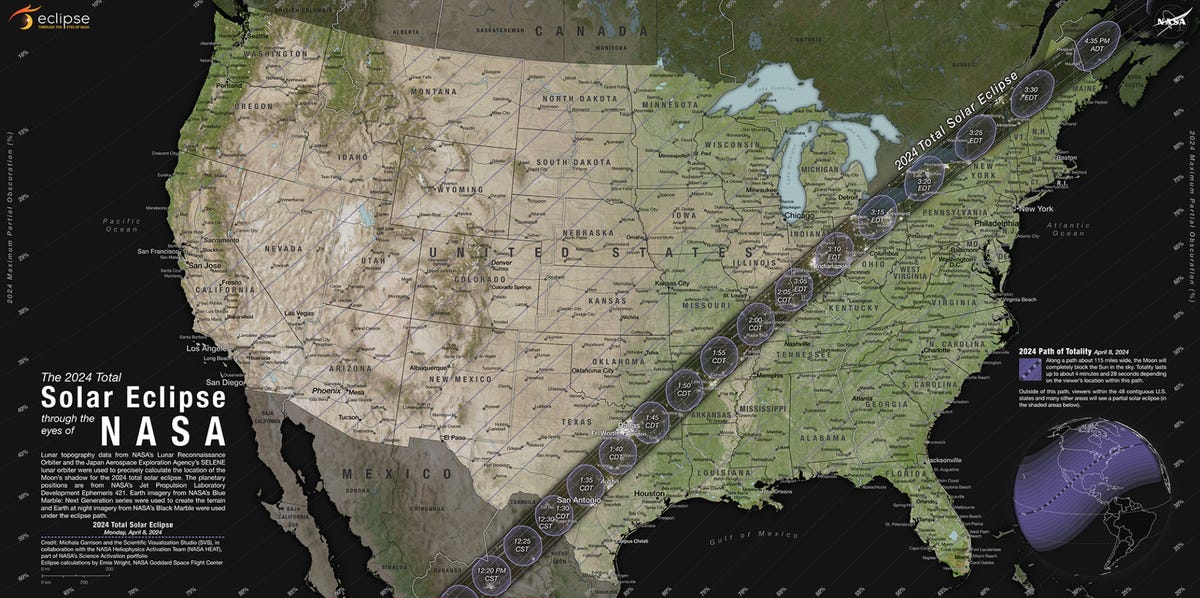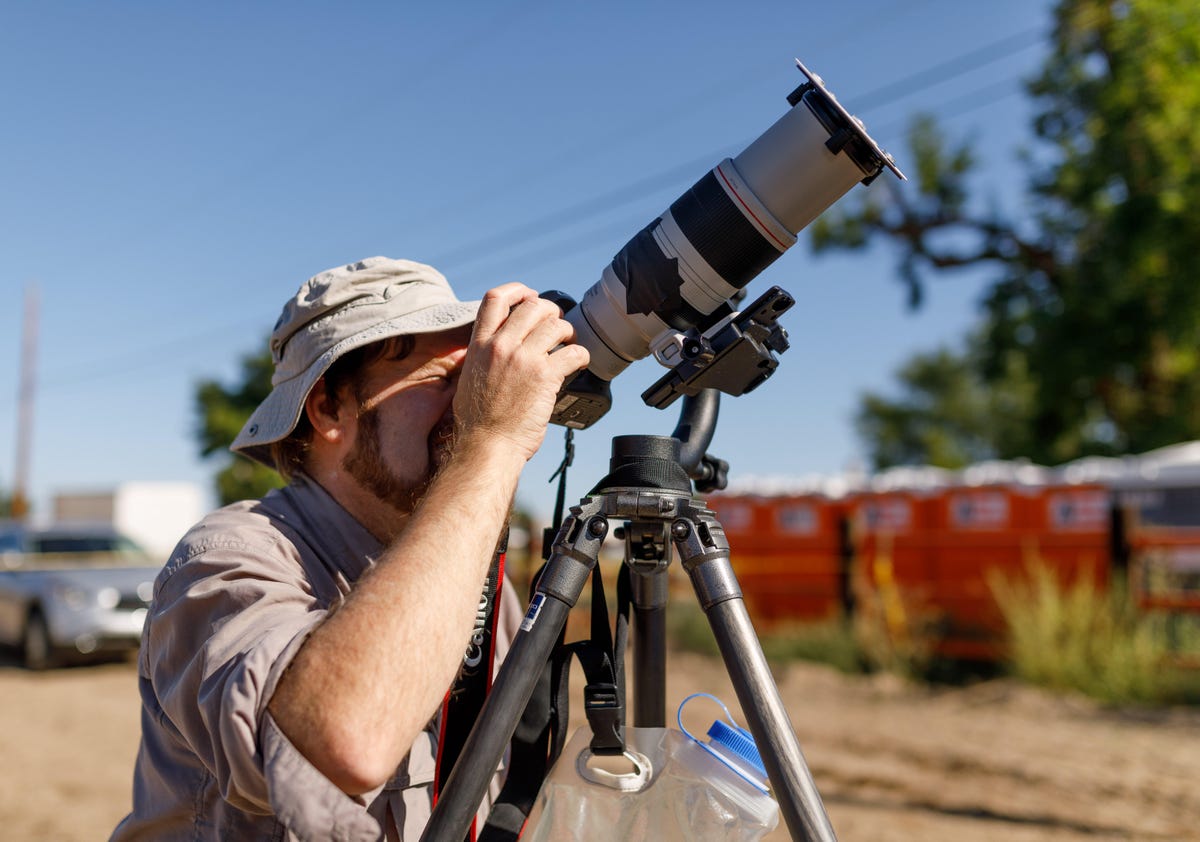The “great American eclipse” is almost here, and if you don’t see this one, it’s a 20-year wait for the next one. On April 8, the last total solar eclipse over North America until 2044 will be visible for several minutes, so let’s hope you either live on the path of totality or have plans to travel there.
A total solar eclipse happens when the moon passes between the Earth and the sun, blocking the sun and turning an otherwise sunny day to darkness for a short period of time. Depending on the angle at which you’re viewing the eclipse, you may see the sun completely shrouded by the moon (called totality) or some variation of it. The more off-angle you are and the farther you are from the path of the eclipse, the less likely you’ll be to see the totality.
The 2024 total solar eclipse will happen on Monday. It will reach the Mexican Pacific coast at 11:07 a.m. PT (2:07 p.m. ET), and then traverse the US in a northeasterly direction from Texas to Maine and on into easternmost Canada. If you want a good look at it, but don’t live in the path of totality, you shouldn’t wait much longer to organize travel to a spot on the path.
You could even book a seat in the sky — Delta Airlines made headlines for offering two flights that allow you to see the entire path of totality. Its first eclipse flight, from Austin, Texas, to Detroit sold out quickly, with Delta offering a second from Dallas to Detroit that still has seats available. Delta also has five other flights that will (coincidentally) offer prime eclipse viewing.
Not everyone can get on one of those elusive eclipse-viewing flights. Here’s a look at other options to nab a chance to see this rare sight and what to know about the Great American Eclipse.


NASA’s map shows the lucky strip of the US that will be within view of the total solar eclipse this April 8.
Best places to watch the Great American Eclipse
When evaluating the best places to watch this year’s total eclipse, you’ll first want to determine where you’ll have the best angle to see the totality. The farther off-angle you are — in other words, the farther north or south of the eclipse’s path — the less of an impact you can expect.
Therefore, if you want to have the best chance of experiencing the eclipse, you’ll want to be in its path. As of this writing, most of the cities in the eclipse’s path have some hotel availability, but rooms are getting pricey. Major cities on the path include San Antonio, Dallas and Austin in Texas; Columbus and Cleveland in Ohio; Indianapolis; Little Rock, Arkansas; and Buffalo and Rochester in New York.

CNET’s Stephen Shankland photographs the 2017 eclipse just as the moon starts occluding the sun. He used black gaffer’s tape stuck to his lens barrel to lock the focus.
Watching the total eclipse from space
You don’t even have to be on Earth to watch the eclipse. Astronauts aboard the International Space Station will have multiple chances to witness this rare event.
“(Astronauts) aboard the orbiting laboratory will have three opportunities to view the ground shadow (penumbra and umbra) of the moon as it tracks across the Earth surface during the total solar eclipse,” NASA said. “After encountering the eclipse shadow above the Pacific Ocean, then during a pass from the New Zealand area to California and Idaho, the space station is predicted to encounter the eclipse during a time of near-to-full totality while over Maine and New Brunswick around 3:30 p.m. EDT.”
But the astronauts still need to protect their eyes, just as Earth’s eclipse-watchers do.
“Safety first still applies in space!” NASA wrote in an Instagram post. “The crew will not directly image the eclipse for the same reason we here on Earth should not look directly at the sun during the eclipse, except during the brief total phase of a total solar eclipse, when the Moon completely blocks the sun’s bright face.”
Even those of us on earth can help out NASA. The Eclipse Soundscapes Project is a NASA Citizen Science project studying how eclipses impact life on Earth. The project is asking for the public’s help, and it’ll use gathered information to revisit a century-old eclipse study about how animals and insects are affected by solar eclipses.
The simplest way to get involved is to read up on how to use your observations from that day to help NASA gather information. Sign up, and then go outside on eclipse day and record your observations and share them as requested. Observers can be on the path of totality, but they don’t have to be. NASA will give participants a certificate for submitting their observations.


